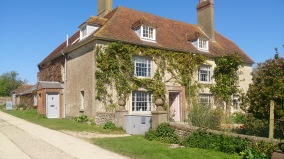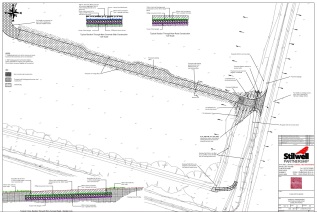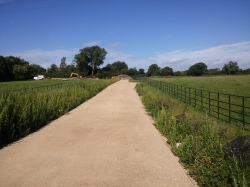 Charleston is a seventeenth Sussex farmhouse and was home of two of the most
Charleston is a seventeenth Sussex farmhouse and was home of two of the most
important artists of the twentieth century- Vanessa Bell and Duncan Grant.
The Charleston House was also the country retreat of the Bloomsbury Group, an influential group of writers, intellectuals, publishers and artists. The group included Vanessa Bell’s sister Virginia Woolf and husband Leonard Woolf, economist John Maynard Keynes, art critics Roger Fry and Clive Bell and biographer Lytton Strachey.
The house is the only surviving example of complete interiors by Vanessa Bell and Duncan Grant. Following Duncan Grant’s death in 1978, the house fell into disrepair with many of its unique interior painting and decorations deteriorating badly.
The Charleston Trust was registered as a charity in 1980 to restore the house to its original condition and first opened its doors to the public in 1986. In 2011 the Trust launched the £8.5m Centenary Project to safeguard the future of Charleston House.
The Centenary Project, which is due for completion in late December/ early January 2017 included the restoration of two Grade II listed barns to provide a new auditorium and public space together with improvements to the café, office and toilets.
Appointed Civil Engineer, the Stilwell Partnership were pleased to have the opportunity to make a major contribution towards the success of the Centenary Project.
 By improving access and parking for an increased number of visitors, the civil engineering improvements would establish a sustainable future for Charleston House whilst reinstating the integrity of its distinctive setting within the South Downs.
By improving access and parking for an increased number of visitors, the civil engineering improvements would establish a sustainable future for Charleston House whilst reinstating the integrity of its distinctive setting within the South Downs.
The existing site access was narrow, in very poor condition and the proximity to the adjacent watercourse with limited available passing places. The watercourse would require a new culverted road crossing which would divert traffic away from the centre of the site to a new car park, hidden from view.
An overflow car park would be discretely provided in a field nearby. Geotechnical conditions required careful consideration to develop sustainable drainage solutions for the site. The improvements would also need to satisfy the requirements of the Highway Authority and the Environment Agency.
Our civil engineering services provided:
- The design of the new access road to the new car park
- The design of the culverting work to the watercourse
- A Flood Risk Assessment
- Drainage design for new auditorium and building improvements
- The assessment and specification of highway repairs to the existing concrete access road from the A27
- The design of additional passing places to the existing concrete access road
- The reinforcement of the embankment of the existing stream (using gabion structures) to accommodate the new passing places
- The design of a new car park for 70 cars
- The design of a reinforced overflow car park on the existing field for a further 80 cars
- The design of a reinforced overflow car park on the existing field for a further 80 cars
- The design of the new drainage system and drainage alterations associated with the above works
And included regular site attendance, supervision and negotiations with the contractors

See full details of the Centenary Project here: http://www.charleston.org.uk/about-the-trust/centenary-project/

Leave a comment